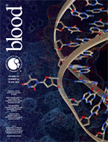USC study sheds light on stem cell reprogramming
Researchers are learning how to turn regular cells into stem cells, a process called reprogramming. However, some of the mechanisms of the process remain unknown, such as why only a small proportion of the cells can be reprogrammed. Researchers have at least part of the answer: the structure of genes.
“Nobody knows anything about how the 3-D genome structure is reorganized during reprogramming,” said Wange Lu, associate professor at the Eli and Edythe Broad Center for Regenerative Medicine and Stem Cell Research at USC and the Department of Biochemistry and Molecular Biology at the Keck School of Medicine of USC. “But we found out that it is a very important process. If the structure is not established correctly, the cells may cause diseases when they are used later in clinical applications.”
Lu and his team have made a series of discoveries that shed light on the process. Their findings have been published in the July issue of Cell Stem Cell. … Read More »



